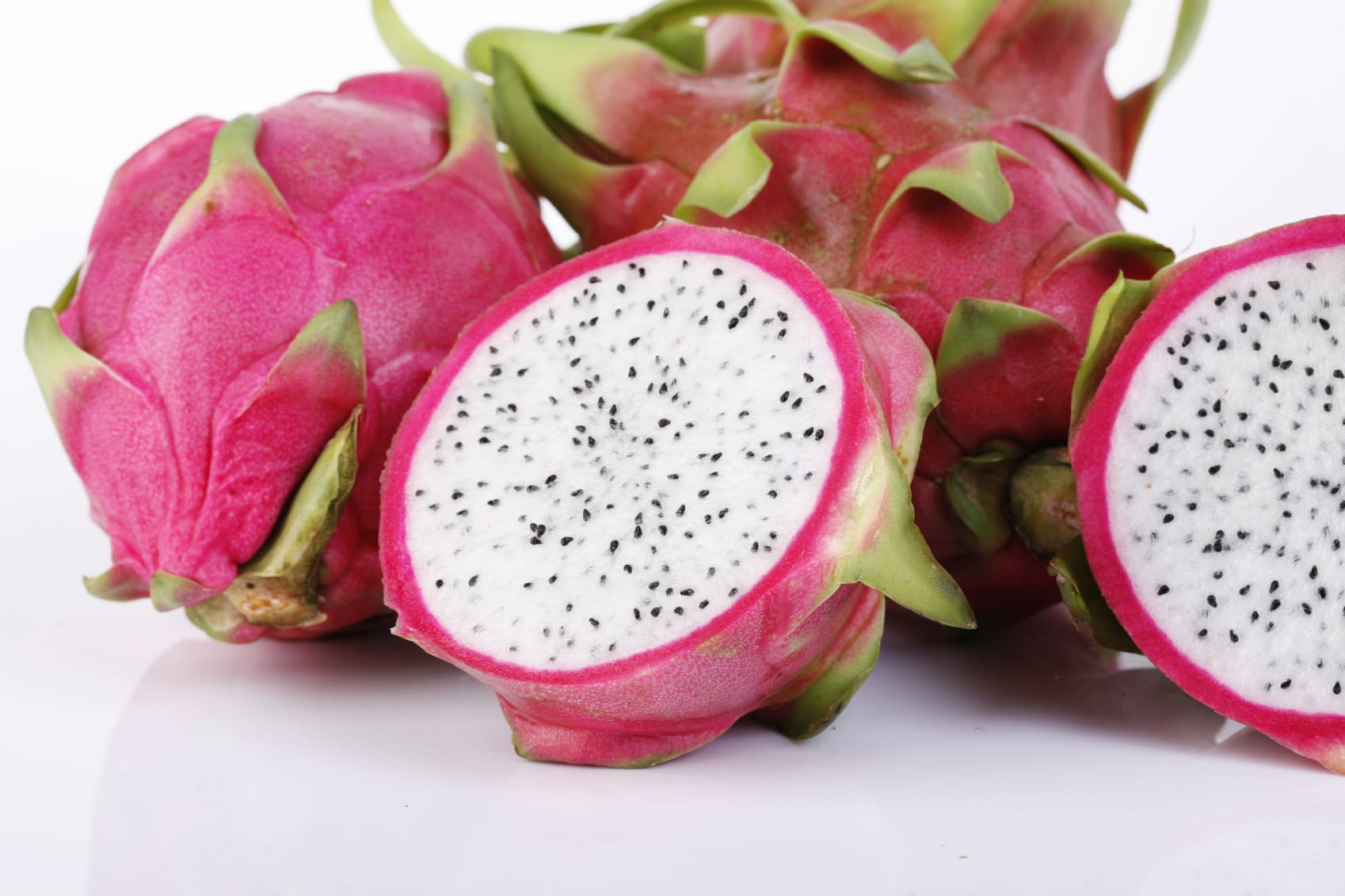
Photo by Nick Koon
We have a wonderful tradition at Rosh Hashanah of eating new fruits of the season. What did you choose? Pomegranate? Apple? And what will be suspended from the roof of your sukkah? Same old, same old?
Sukkot or “Feast of Ingathering” was agricultural in origin. Why not celebrate this thanksgiving of the fruit harvest with a truly rich bounty of all those curious, oddly shaped, colorful varieties you’ve never yet purchased because they’re just so strange.
And with more and more exotic varieties offered at Farmers Markets and even supermarkets, I’m thinking, eating new fruits should be a weekly habit, not just an annual tradition. But what do you do with them if you don’t even know what they are?
You’re shopping for produce, and you spot this spiny magenta…what? You’re curious, but what on earth is it? For a moment your hand hovers as you gauge your own adventurous spirit. But do you buy it soft or firm? peel it? cook it? eat it raw? So instead you buy plums. Again.
“The appearance of dragon fruit is downright surreal,” writes Cathy Thomas, food editor of The Orange County Register and award-winning author of “Melissa’s Great Book of Produce: Everything you need to know about fresh fruits and vegetables” (Wiley), a gloriously photographed, comprehensive guide down the produce aisles. With Thomas at the helm, each fruit, from Asian pear to yuzu, and each vegetable, from artichoke to yu choy sum, begs to be discovered, its perfume inhaled and, yes, tasted.
Dragon fruit “has eye-popping magenta skin, dotted with bright lime-green spines” and “tastes like a marriage between kiwi and pineapple,” she promises. Indeed it does, as I discovered at a recent book signing and reception. Robert Schueller, marketing guru for Melissa’s World Variety Produce, Inc., the largest distributor of specialty produce and foods in the U.S., selected a dragon fruit from the exotic fruit buffet – a riot of color like an artist’s palette – and cut into it to reveal its purplish-pink flesh.
So what do you do with it? Dice the flesh, says Thomas, and combine it with diced pineapple or mango, toss with mint or liqueur and serve in the spiny shells. Or cut into wedges and splash with fresh lime. Use dragon fruit purée in cakes or quick breads or fold into sweetened whipped cream.
Thomas and Melissa’s have teamed up to take the guesswork out of buying, storing, preparing, using and serving 120 fruits and vegetables. Brilliant photos from the Register’s Nick Koon and 100 mouth-watering recipes, plus a glossary of gizmos, make “Melissa’s Great Book of Produce” a valuable resource for the home cook or seasoned professional.
But the icing on the cake (or, I should say, the crown on the pomegranate) is the prose. Unlike other produce guide writers one consults for mere information, Thomas, with her uncanny ability to capture sound, smell and taste, invites you on a shopping adventure.
Take figs: “Fragile fig skin surrenders easily to reveal soft-textured flesh filled with a multitude of tiny seeds. A bite produces tiny seed-popping sounds, flesh saturated with honey flavor, and a moist flower-petal aroma.” Go ahead. Pass up those luscious black missions. I dare ya’.
Each fruit and vegetable fairly leaps off the page. “I want people to be able to smell each one and taste it,” she told me. “Should it give a little when you press your thumb or snap when you break it?”
Common varieties combine with the exotic, eliminating the intimidation factor. “Everybody knows common celery,” said Thomas, “but what about Chinese celery? The leaves and stalk are limp. They’re supposed to be. They’re so aromatic and delicious. I love to see people use them in stir-fries and soup.”
“I make it a point to try something different every time I shop,” noted Nancy Eisman, Melissa’s special projects director. Good idea!
So as fall days turn crisp and the soup kettle beckons, why not try the sunflower choke, also called Jerusalem artichoke or sunchoke. (Alas, this vegetable has nothing to do with Jerusalem. The name derives from the Italian word for sunflower, girasole.) With its knobby appearance, you might mistake it for ginger, but its nutty flavor tells you, that is where the similarity ends. You can also cut them into sticks to serve with dip or roast, steam or boil them.
Kumquats look like tiny oranges, and the entire fruit is edible. You can poach, sauté, bake or boil them. Candy them for marmalade or relish using simple syrup. Here they team up with squash as an accompaniment to salmon, steamed in individual foil packets.
There are over 25 varieties of Asian pears. You can eat them raw or slice them into salads or slaws; dip them in warm caramel or chocolate fondue; or bake them in pies, crisps and cakes. Thomas suggests topping these turnovers with ice cream or a dollop of crème fraîche or sweetened plain yogurt. A scrumptious ending to this unique fall menu.

Judy Bart Kancigor is the author of “Cooking Jewish: 532 Great Recipes from the Rabinowitz Family” and can be found on the web at www.cookingjewish.com.
The words of this author reflect his/her own opinions and do not necessarily represent the official position of the Orthodox Union.
